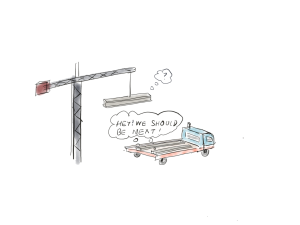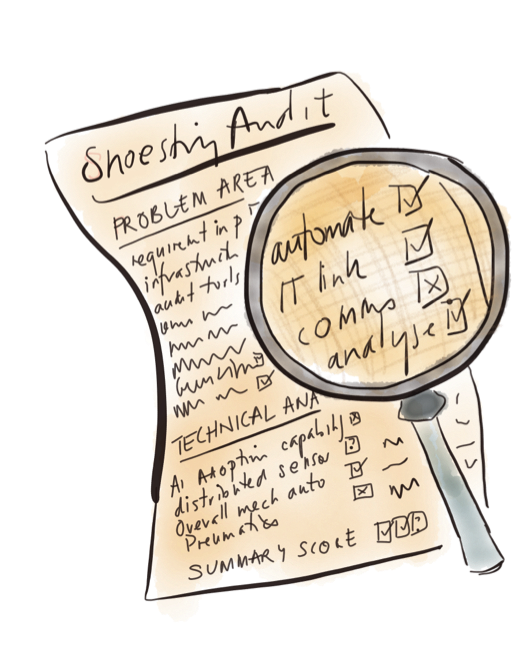While the benefits of digitalisation for construction are widely acknowledged, some businesses lack the resource to implement change. Professor Duncan McFarlane, Professor of Industrial Informational Engineering and head of the Distributed Information & Automation Laboratory at the Institute for Manufacturing, University of Cambridge, presents a different approach demonstrating how digital can work for everyone
Be in no doubt that digitalisation is driving change across many sectors. That said, the construction sector has not adopted digital process and technology innovations as rapidly as some others, such as the service sector or manufacturing – although this has accelerated over the last 10 years with industry and industry bodies working together to support change. Construction has been the subject of numerous reports over the years evaluating the current and future state of the industry and recommending change but progress is slow.
 Digital solutions, enhancements and interventions can work for everyone and there are significant opportunities for businesses to gain through applying simple, cheap technologies that bring benefits including improved productivity and flexibility.
Digital solutions, enhancements and interventions can work for everyone and there are significant opportunities for businesses to gain through applying simple, cheap technologies that bring benefits including improved productivity and flexibility.
However, digitalisation is sometimes perceived as being beyond the financial reach of small and medium-sized enterprises (SMEs) and there are a number of commonly cited barriers to engaging with digital tools and technologies, including high entry and operating costs and complexity.
Responding to these challenges, Digital Construction on a Shoestring is a collaborative programme between academia and industry that seeks to co-deliver benefits by increasing the digital capabilities of small companies in the construction sector using simple, proven low-cost digital solutions.
Enabled by the Construction Innovation Hub, Digital Construction on a Shoestring brings the opportunity for SMEs and other construction organisations to work with academic experts from the University of Cambridge Institute for Manufacturing and Centre for Smart Infrastructure & Construction to identify specific digital solution priorities according to organisational objectives.
Organisations are helped to identify practical pathways for developing and deploying simple, low-cost digital solutions.
Digital Construction on a Shoestring follows the Shoestring Approach that emerged from Digital Manufacturing on a Shoestring, an Engineering & Physical Sciences Research Council-funded project that helps SME manufacturers to benefit from digitalisation without excessive cost or risk, and with limited requirements for digital skills. Shoestring does not set out to deliver a comprehensive digital transformation but rather provides an incremental approach for SMEs to gradually develop and increase their digital capabilities.
The inaugural project focused on co-developing very simple digital solutions for SME manufacturing companies to address immediate needs. This model has attracted a lot of interest among the manufacturing SME community and the initiative continues to appeal to a growing partner base, which has more than doubled in number since the launch and has involved 300 companies in different aspects of the work.
Workshops
Workshops are integral to the Shoestring approach and, through discussion and targeted questions, help establish prioritised digital solutions for the participating organisations to help meet immediate challenges in the sector.
 There have been a number of Digital Construction on a Shoestring workshops to date, which are part of phase one of the project. Data collected from participants is used to drive the programme that comprises development blocks constructed from simple low-cost technologies – industrial as well as consumer, such as Alexa. The first set of online workshops, held last year, collected requirements data from suppliers to the construction industry and offsite construction companies.
There have been a number of Digital Construction on a Shoestring workshops to date, which are part of phase one of the project. Data collected from participants is used to drive the programme that comprises development blocks constructed from simple low-cost technologies – industrial as well as consumer, such as Alexa. The first set of online workshops, held last year, collected requirements data from suppliers to the construction industry and offsite construction companies.
Identifying shared priorities among the participants is important as deploying digital solutions at scale across many companies keeps costs affordable. A modular approach to solution development simplifies deployment of future shoestring solutions within an organisation. This approach allows smaller organisations to build digital solution support incrementally rather than investing upfront in a complex system that has a high entry cost.
The Shoestring team has used the digital solution areas identified in the workshops to build a catalogue in the construction space. Some of these solutions are being co-developed as demonstrators, enabling the organisations to see solutions up and running and working.
Following co-development of demonstrators, the participating businesses are empowered and equipped to build their own digital solutions. Most of the solutions developed are helping someone in a construction organisation to do something – but better – and Shoestring participants have been happy to share experiences and benefits. There are plans for a Shoestring foundation (hub) to support construction solutions, share knowledge, experience and resources.
Phase two
The second phase of the project, which has just started, extends requirements capture specifically to the onsite construction domain. Data collected from these workshops identified a finite set of digital solutions needed by most of the participating small organisations with the highest priority solutions including:
- Construction scheduling.
- Process monitoring.
- Unified change management and issue reporting between design and construction operations.
- Digitised employee training.
- Display of construction schedule/work plan.
- 4D virtual project planning (3D rendering).
- Digitised work instructions and assembly procedures.
- Automated quality inspection.
- Automated completeness checking.
- Project management systems (to track the status of schedule time, costs, etc).
After the Shoestring team collated the digital solutions collected from the online workshops, detailed user and technical requirements data for a specific digital solution were collected through in-company workshops. Data collected in the in-company workshops is being used for identifying and building demonstrators and planning outreach work to showcase demonstrators and how to build solutions.
Future plans
Phase three will pull all the solutions together to formalise the design approach and create a prototype software environment for semi-automated digital solution design.
In the longer term, the Shoestring team will review all the solutions to formalise the design approach and create a prototype software environment for semi-automated digital solution design. There are also plans for the team to explore the effectiveness of Shoestring approaches in a BIM environment.
The construction sector is in the process of redefining itself, and Shoestring helps to bring more organisations working in the construction space into the digital domain to co-develop digital solutions that are repeatable, reusable and integrable.
This research forms part of the Centre for Digital Built Britain’s (CDBB) work at the University of Cambridge. It was enabled by the Construction Innovation Hub, of which CDBB is a core partner, and funded by UK Research & Innovation through the Industrial Strategy Challenge Fund.
Professor Duncan McFarlane
Head of the Distributed Information & Automation Laboratory
Institute for Manufacturing, University of Cambridge
Twitter: @dmshoestring

















